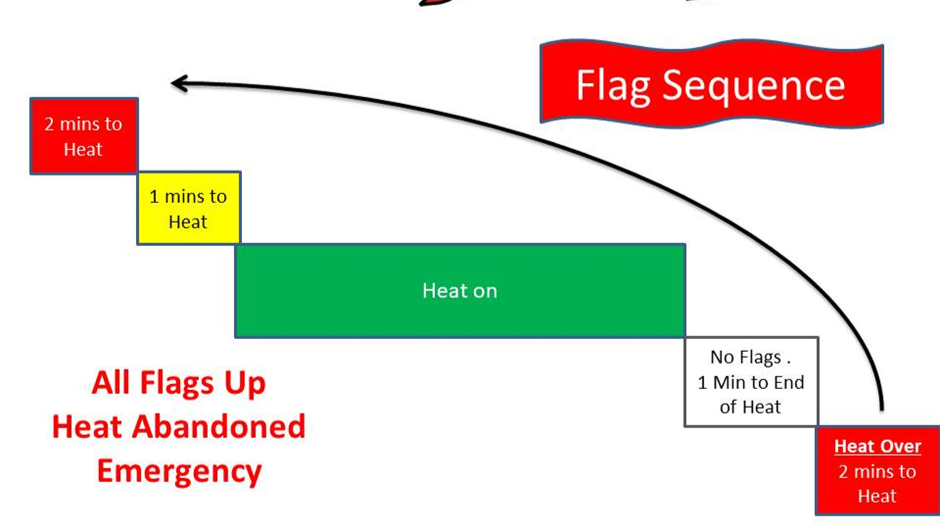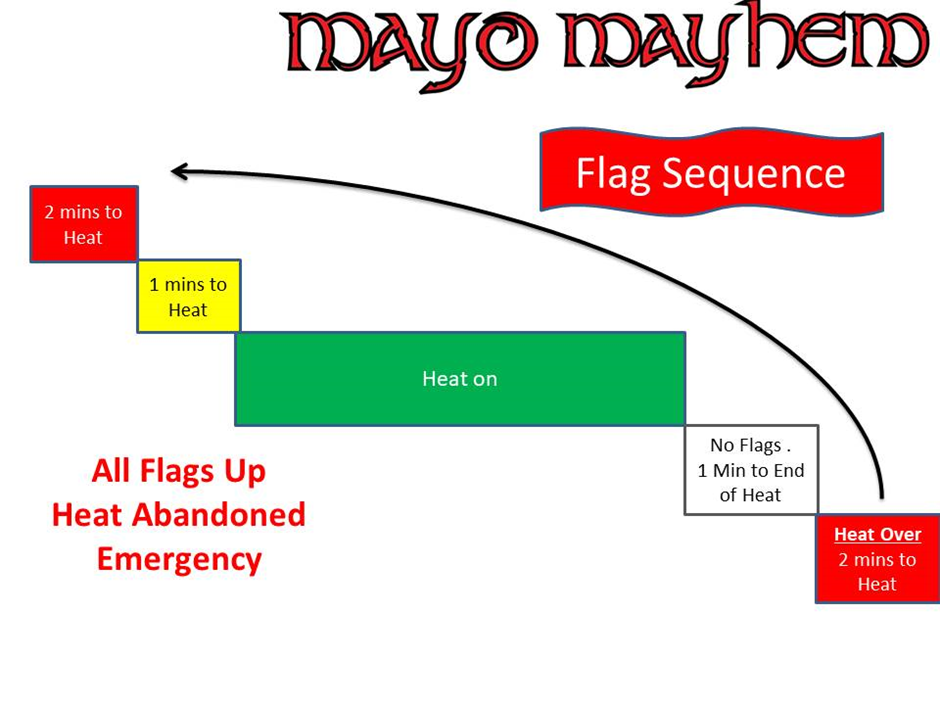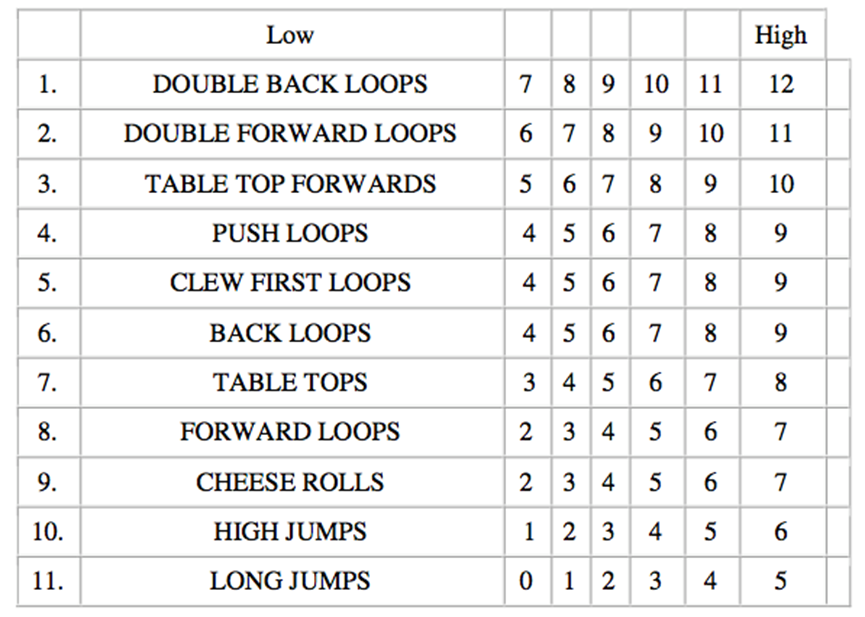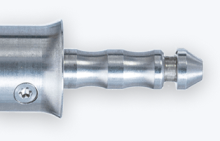
Wave sailing competition Guide.
So you would like to enter a windsurfing wave event but are put off as you don’t know anything about them. In this section we will try and provide you with enough information so that you are ready to give it a go.
Criteria for entering the Silver (Beginner/ Intermediate)
You should be able to sail a board less than 100lt in the foot straps and using harness lines. You would need to be able to water start, be starting to get the odd gybe and are starting to Jump. Very few if any sailors in this fleet will be looping but some might be trying them.
Heats
Each event consists of a number of heats that eventually end up with a final heat to decide the winner. Each heat consist of a number of sailors (2 to 5) sailing against each other for a defined period of time usually anywhere from 10 to 15 minutes.
The aim of Mayo Mayhem is to have fun, encourage and help people to push their windsurfing limits .With this in mind we have designed the weekend to maximums competitors competition time and experience.
The first thing we do differently is that we don’t run a double elimination. If we are lucky enough to get two days of competition we will run a second full day single elimination competition. This ensures that everyone gets to sail as many heats as possible. The final result for the event is based on the combined results of the two single eliminations.
We recognised and appreciate that attending a weekend competition in the West of Ireland requires a big investment in time and money. Therefore we felt that it was not fair that riders could be knocked out after just one 15 minute heat. This is especially true if something went wrong such as equipment failure. For this reason we have designed the heat ladder to include a second chance round thus ensuring everyone gets to sail at least 2 heats.
The way this works is the 1st and 2nd place winners go through to round 3. The 3rd and 4th place rides go into round 2 (AKA the second chance round) where they compete against the 3rd and 4th place finishers from the other round 1 heats. The 1st and 2nd place rides from the second chance round 2 then move forward to round 3 where they will compete against the 1st and 2nd place winners from round 1. See Pic below as an example
This ensures that everyone get to sail at least 2 heats. Out of a fleet of 20 rides 15 will get to sail a minimum of 3 heats if its a one day event or 6 heats if we have 2 days.
Flags are used to communicate with competitors as to when heats are about to begin and end. There are 3 Flags, Green, Yellow and Red. At the start of a heat flags are used to communicate 2 minute then 1 minute then start. At the end there is a 1 minute to go and then an end flag.
Red flag signals that the heat will begin in 2 min. Yellow signals that the heat will start in 1 Min. Green signals the start of the heat. When the green comes down and there is no flag up it means that there is only 1 minuet left. Red flag signals end of this heat but also signals the 2 minute warning for the start of the next heat

We issue riders with coloured streamers during competition. This enables the judges to identify each rider and score accordingly. (NO Streamer…No scorey!).
It works like this….
1. CHECK heat board for your colour (R,Y,W,G,B)
2. Select Streamer and attach to your rig.
3. GO compete.
RETURN Streamer to the heat board for the next competitor
Judging
Competitors are judged on their Jumping and their wave riding. At the start of the event a decision is made as to the amount of Jumps and waves that you will be scored on. So it could be that your best 3 jumps and best 2 waves are scored. If you did 10 jumps and 5 waves you would only be scored on the best 3 jumps and the best 2 wave. Points are award for each and the competitor with the highest wave and Jump score wins the heat. A detail explanation of how Jumps and waves are scored can be found below .
Competition sailing differs from a regular blast around in the following ways.
Area
There is a defined area that you need to try and stay in so no more blasting to the horizon looking for that perfect ramp. You might also need to be more aware of staying up wind and not sailing too far down wind. There is no penalty for going outside the area but you do risk the judges missing any moves done as they might not be able to see you
Time
You have to be aware of the time . You will wear a watch and will be constantly checking it to see how long you have left. You have 15 minutes to show what you can do so you have to put a show on. No time for coming in for a break or a chat on the beach between runs. Your water starts have to be quick as time in the water is precious.
Strategy
You need to be strategic, do I get some safe jumps in early on and get my points and go for the big moves later when I have secured my point’s ? Do I go for my wave rides first or jumps first ?. Do I go big early and try and psych the others out and force them into doing something that they could make a mistake on that will see them spending lots of time swimming. Do I start my heat from the beach or out back?
Competitors
What are the other sailors doing, how am I doing versus them. Have I done enough? I see one guys has been stuck in the shore break so his heat is in trouble, I see another guy is sailing really well so I need to go big now or I am out.
There is so much to think about in a heat and therein lies the excitement the adrenal rush and the fun .
Other Consideration
Some other things that you need to consider on competition day are: Energy conservation, do I rest between my heats or do I do some practice sailing in-between. Do I sail flat out or can I conserve my energy as it could be a long day. How do I keep warm, hydrated, feed etc.
What should I rig and what is my second rig waiting on the beach if needed.
Summary
Don’t be scared off. Let’s put the silver fleet into context. The majority of sailors in the silver fleet will be proficient and well able to handle wind and waves. To progress in the sliver fleet all you will need to do is some impressive high/long jumps and some turns on the waves. Some of the jumps might be fancied up by doing them with one hand off in the air or a donkey kick added in. In this fleet it would be unlikely anyone will be competently looping (If we think they are they will be encouraged into the gold fleet) or we would not expect any Ariel’s on the wave. When it comes to a wave event sometimes the person who is the best sailor doesn’t do so well. They can get their tactics wrong on the day. Sometime the people who win are the more conservative riders that just sail a steady safe heat. So don’t be put off if you don’t have all the moves as there is more to a competition than big moves.
I would recommend that you visit the PWA site and go into the video section. There you will find Videos from the PWA event. If you watch the youths or the ladies event you will get a good idea of the level of where the sliver fleet would be (Less some of the looping). Here you will see that it is not like the super slick video edits that we are used to watching on youtude/ facebook. You will see that like the rest of us, gybes are missed; Jumps go wrong, catapults happen. There are periods of inaction where not a lot is happening. You will end up thinking “You know what I could do most of what they are doing. So why not give it a go”
Scoring In more Detail
JUMPING:
The generalisation of highest scored manoeuvres to lowest scored manoeuvres is below. These are guidelines for perfectly executed manoeuvres of equal height and should only be taken as general guide. Jumps of particular height or style, as well as jumps performed in different conditions may score more highly than jumps listed higher in the list below. Judges will evaluate the jumps on a day to day basis, based on the conditions, wave height and wind strength.
1. Push Loop Forward
2. Double forward
3. Push Loop Table Top
4. Table Top Forward, Air Chacho , Clew First Forward
5. Shaka , Push Loop , Back Loop
6. Table Top , Crazy Pate
7. Forward
8. Cheese Roll
9. High Jump
10. Jump
Jumps are scored from a scale of one to twelve – Below is a table giving a very broad example of how this may be assigned. The scores next to them are just to give a guideline for judges and a not a rule.
Jump Scoring continued :
All jumps will be classed in one of these 4 categories.
F - Forward rotating jump
C - Combined jump (Table/forward, Table/push, Double)
B - Backward rotating jump
J - Normal jump
Please note a maximum of 2 jumps will be scored from any one category in the gold fleet. (This encourages a variety of manoeuvres and eliminates the need to markdown repeated moves.)
Tweaked variations such as Table Top Forward Loops and Push Loop Table Tops shall only be scored as different jumps if the Table Top aspect is clear and distinguishable from the normal manoeuvre.
A jump is marked higher for being higher, stalled, one handed and landed well (clean/planning)
One handed or one footed manoeuvres shall be scored more highly if completed with equal height and in control, but shall not be scored as a different jump.
A jump is scored lower for being low, messy, out of control and crashed landings. A very high jump will not be marked down much if the landing is wet as long as the sailor is in a water start position. As a general rule, the judges want to see what you can do, not what you are learning to do. New manoeuvres are encouraged, but only if executed in a controlled fashion.
WAVE PERFORMANCE JUDGING GUIDELINES
Each Judge may award each competitor for each manoeuvre points on a scale from 1 to 12 in increments of 0.5 of a point, according to the spectacle, variety and quality of performance. Only the best scored manoeuvres in each category shall be taken into account to determine the winner. The total points in each category shall be multiplied by a certain factor. The resulting number shall be totalled to determine the winner: highest points wins. The number of manoeuvres and number of categories to be counted towards the result and the multiplication factor for each category shall be decided by the Head Judge and then posted on the Official Notice Board no later than 30 minutes before the starting signal for the first heat. Any change in criteria shall be announced no later than 15 minutes before the starting signal for the first heat in the next round.
WAVE RIDING
Competitors will be judged primarily on the fundamental principles of good wave riding - speed, fluidity, power and their proximity to the critical section of the wave. In general a more vertical approach to the lip, initiated by a committed, powerful bottom turn will score more highly than a more horizontal “down the line” style of ride. Directional changes will be assessed on the degree to which direction is changed and on the speed and fluidity with which this change is achieved. The amount of spray thrown out during the turn will tend to indicate the severity of the directional change.
Cutbacks will be scored considering the vertical aspect of the approach, the proximity to the critical section of the wave, how deep inside the lip the turn is made and the speed and power with which the manoeuvre is executed. The sailor who is committed deep into the face of the wave will score more highly.
Aerial manoeuvres will enhance the score but there should be clear differentiation between simple hops after riding straight down the line and aerials that are performed by bottom turning back up the face and hitting the lip. Aerials should be executed in a controlled fashion and a manoeuvre that is cleanly “tweaked” shall score more highly than one that is ragged or twitchy in the air. The sailor that uses the wave and “hits” the lip to create the aerial will score more highly than one who simply hops off the top of the wave.
Freestyle manoeuvres will only enhance the wave score if integrated into the wave ride and are performed in a critical part of the wave. Sailors who simply set up for one freestyle move on the wave will not be scored higher compared with a sailor who has ridden the wave. It should always be considered that this is the waveriding category, however pushing the sport with radical manoeuvres will be rewarded.
To gain maximum points sailors should demonstrate as wide a variety of different skills as possible. A sailor who performs both cutbacks and aerials should in general score more highly than a sailor who performs the same move repeatedly as should a sailor who includes front and backside riding and any number of other manoeuvres during the ride. Sailors who simply blast down the line and perform one big move will not be scored as highly as those who really ride the wave, but only if the turns and manoeuvres performed are of a high standard. In general quantity should not be scored more highly than quality.
Whilst wave selection is a factor in scoring, it should only influence scoring between 2 equally well ridden waves. In general, a sailor who rides a smaller wave well shall score more highly than a sailor that takes a bigger wave but does not ride it as well as the smaller one.
Sailors who take risks and perform more radical manoeuvres should be rewarded more than sailors who “play safe” provided that manoeuvres are completed in a reasonably controlled fashion.
Notes:
1. One-handed manoeuvres enhance difficulty and score, but the difficulty of the basic manoeuvre should be taken into account. A sailor who performs a much more difficult manoeuvre should be more highly rewarded than a sailor who simply removes one hand during an average manoeuvre.
2. To encourage progress in wave manoeuvres, new moves will be scored highly, but only if executed in a controlled fashion.
3. If it is difficult to clearly determine individual waves, then the entire sail in may be scored as one wave. Sailors will be informed of this at the skippers meeting or at the check in.
4. If a sailor is on a wave at the end of a heat, that wave will continue to be scored until the sailor exits the wave.
Generalisation of highest scoring wave manoeuvres
1. Off the lip back loops.
2. Off the lip 360 deg. (Takas, Goiters etc)
3. Off the lip forward loop.
4. Table top aerials.
5. Off the lip aerials.
6. Forward loop in the chop.
7. Body drags.
8. Chop hops.
Sponsors















